Newborough
Houses within 10km of this house
Displaying 72 houses.
Houses within 10km of Newborough
Displaying 72 houses.
| House name | Description | |
|---|---|---|
| Clonmacken | Built in 1700 by Reverend Edmund Palmer according to the Ordnance Survey Field Book, this two-storey house was occupied by Henry D'Esterre in 1814, by Captain Vereker in 1834 and by 1839 was the seat of John Brown Finch. In the early 1850s it was the residence of John Sharp, situated on the Lansdowne estate, it was held from Lawrence Kelly. | |
| Clorhane | Home of Thomas Dalton in the mid 18th century and of the Fosbery family in the 19th century. Held by George Fosbery junior at the time of Griffith's Valuation when the buildings were valued at £11. Home of Francis Wise Browning in the early part of the 20th century following his marriage to Jane Philippa Fosberry daughter and co heiress of Thomas Fosberry of Kilgobbin and Clorane. Cussen writes that this house is now demolished. | |
| Curraghbridge | Located on the Bury estate and home of a branch of the Fosbery family for much of the 18th and 19th centuries. Taylor and Skinner record the occupant as the Reverend Mr Westrop in the late 1770s. ''Burke's Irish Family Records'' records Thomas Westropp of Curraghbridge, father of the Reverend Thomas Westropp rector of Doonass. The residence of G. Fosbery in 1814 and in 1837. Described circa 1840 as in good repair and comprised of 4 storeys. Occupied by Samuel Dixon Power in the early 1850s who held the house and 197 acres from George Fosbery. It was later occupied by S.D. Power's son-in-law, Edmond Langley Hunt. A house is still extant at this site. | |
| Currah Chase | This was an 18th century house with early 19th additions, home of the Hunt/De Vere/ Vere O'Brien family. In 1906 it was valued at £57 and was occupied by Henrietta L. De Vere. Bought by the Forestry Department in the 1940s the house was destroyed by fire in 1949. |
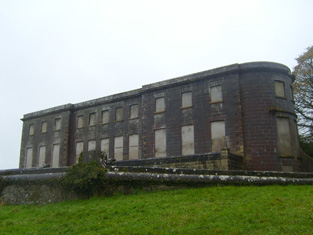
|
| Farm Lodge | Marked as Farm Lodge on the first Ordnance Survey map this house on the De Vere estate was occupied by James Potter in the early 1850s when it was valued at £16. An extensive farm still exists at the site. | |
| Rockfield | The residence of Edward Fitzgerald in the first half of the 19th century, held by him from Captain Richard Gloster at the time of Griffith's Valuation and valued at over £11. | |
| Cartown | Built in 1763 Cartown was the residence of Mr Baldwin in 1826 and of John Edward Langford in 1837. In the early 1850s Griffith's Valuation records the vacant house as valued at £24, William Sheedy holding the whole townland from General James Caulfeild. By the late 19th century the house was in the possession of the Westropp family. This house is still extant and occupied. |

|
| Mellon | The Westropp family are recorded as "of Mellon" from the early 18th century. Bence Jones dates the present house from circa 1780, the Ordnance Survey Field Name Books from 1812. Inhabited by Mrs Jane Westropp (nee Dawson) in the early 1850s. It was valued at £36. This 3 storied house was still in Westropp possession in the late 20th century. It is now run as a stud. |
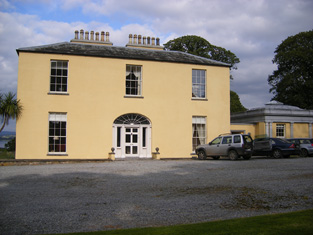
|
| Mount Pleasant | The Ordnance Survey Name Books record that this house was built in the mid 18th century by a Mr Star. It was a neat farm house occupied by Mrs Hill in 1837 and by Thomas Hill at the time of Griffith's Valuation. He held the property from Daniel Leahy and the buildings were valued at over £11. This house is still extant and occupied. |
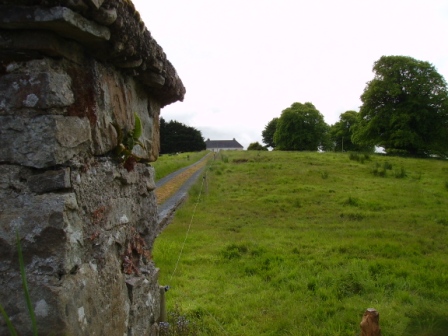
|
| Kilbreedy | A house occupied by Michael Nash at the time of Griffith's Valuation and held from the Reverend William Waller, valued at £11. | |
| Stonehall | A house built 1803 and situated on the Waller estate in the mid 19th century and occupied by the Langford family from at least the early 19th century. This house is still extant and occupied and the property includes an open farm. |

|
| Holly Park | In 1786 Wilson describes Holly Park as "the seat of Richard Taylor, it is very commodious and well-situated, having convenient offices and extensive demesnes". Lewis writes that Holly Park was the ancient residence of the Taylor family "now the property of Sir Aubrey de Vere". However Griffith's Valuation records Richard Taylor holding Holly Park in the early 1850s in fee. It was valued at £36. In 1894, Slater referred to it as the seat of George Taylor and in 1906 George Taylor held 277 acres of untenanted land and a mansion house valued at £34 at Currahchase North. Sold by the Taylors in 1939. Feheney writes that the son of Tom Clarke, one of the leaders executed in 1916, bought Holly Park from the Land Commission in the 1940s. The home of John Philip Cohane in the 1970s who had restored the house after a fire. It is still extant. | |
| Ballynolan | This 3 storied house was the seat of the Reverend Thomas Westropp, rector of Ardcanny, built by him [his father?] in 1797. It was occupied by H. Potter esquire in 1837 and by Peter W. Morgan at the time of Griffith's Valuation who held it in fee with a demesne of 98 acres. Valued at £11.10 shillings in 1906 and occupied by Sarah E. M. Westropp. Still extant and occupied. |
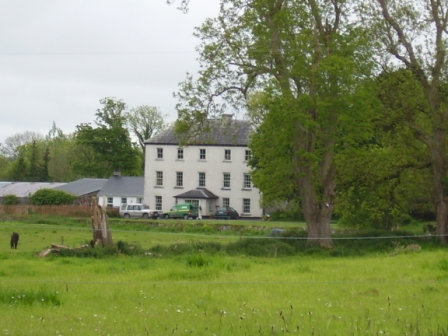
|
| Bolane | Bollane Cottage was occupied by Arundel Hill in 1837. A house at Bolane was the residence of Thomas Hanly in the early 1850s and valued at £16. It was held from Daniel D. Power. A house is still extant at this location and occupied. |
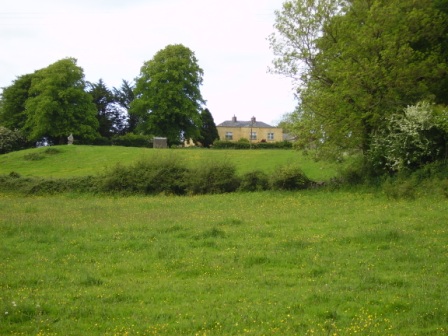
|
| Ballynacarriga | The Ordnance Survey Field Name Books describe this house as "falling into decay", the property of Mr Enright. By 1837 a Mr Dawson was the proprietor of Ballynacarriga House and in the early 1850s it was occupied by Dawson L. Westropp. In 1906 Ballynacarriga valued at £20.10 shillings was occupied by Norris Richard Russell. | |
| Ballynacarriga | Built in 1819 this house was occupied by a member of the Hill family at the time of the Ordnance Survey who was renting the property from Mrs Hurst . Lewis records H. Hurst as resident in 1837 and in the early 1850s Captain Richard Gloster held this house valued at £21 in fee. This house is now known as Rockfield. |

|
| Castlegrey | A house in the possession of the Langford family in the 19th century, the residence of G. Langford in 1837 and of Charles Wiedenham Fosbery in the early 1840s and 1850s. He held the property from Mrs Jane Langford. It was valued at £11. Slater refers to it as the seat of Captain Frederick Verschoyle in 1894. Some buildings are still extant at the site. | |
| Court/Kildimo Court | In 1837 Lewis wrote that Kildimo Court "which is nearly entire was the seat of the Hartstonge family". The Hartstonges appear to have inherited this property from the Widenhams. In 1786 Wilson refers to Court as the seat of Sir Harry Hartstronge and notes that "a bridge is now building at the ferry of Court but the house is in ruins". The property called Court Castle is labelled "in ruins" on the 1st edition Ordnance Survey map. A house labelled "Court" appears in the same townland on both the 1st and 25-edition maps. Buildings are still present at this location. | |
| Hollywood | Occupied by James Raymond in 1814 this house became the residence of a junior branch of the Castle Hewson family. The home of James Hewson at the time of Griffith's Valuation who held the property valued at £17+ from Henry Fitzgerald. |

|
| Clonshire | Occupied by George Fosberry in 1814 and by J. Dickson in 1837. This one storey house was described as a ''comfortable slated cottage built in 1812 by the present occupier Col. John Dickson'' [brother of the Reverend Richard]. This house, valued at £22 at the time of Griffith's Valuation, was occupied by Samuel D. Power who held it from John Pigott. Clonshire is now the location of a large equestrian centre. Owned by the Greenall family, Lord Daresbury, in the 20th century. [The Greenalls also bought Mount Coote]. |

|
| Ballinvira | Ballinvira was occupied by Thomas Fitzgerald in 1814 and by Gerald Browne Fitzgerald in 1837. The residence of William Power in the mid 19th century, held from Henry Fitzgerald and valued at £12. | |
| Maryville | Built in 1790 and located on the Monsell estate the residence of Hugh F. Finch in 1837 and of Mrs Finch at the time of Griffith's Valuation when the buildings were valued at £28. In 1906 Captain G.W. Finch occupied the mansion house at Maryville valued at £35. Still in the ownership of the Finch family at the time of the Irish Tourist Association survey 1943. This property is now known as Maryville stud. |

|
| Ballymurphy | Occupied by Eyre Powell in 1837 and by the Reverend George Peacock in the early 1850s and held from Edward C. Villiers. |

|
| Fort Etna | The home of the Peacock family in the 19th century, although J. Waller O'Grady was resident in 1837. At the time of Griffith's Valuation it was occupied by Mrs Peacocke who held it from Charles Leslie, valued at £30. Occupied by Edmund White in the 1870s Bence Jones records that it later became the home of the Reilly and Peart families. The original house is now a ruin. | |
| Greenmount | Built in 1770, a two storey house, home of the Green family and held from the Peacockes. In 1786 Wilson refers to the seat of Mr. Greene, within half a mile of Patrickswell. which he calls Graig. The buildings were valued at £42 at the time of Griffith's Valuation. Sold by the Greens in 1947. In the 1960s the house was demolished and a large modern house built instead by the Earl of Harrington. |

|
| Jockeyhall | A Blackall residence in the 18th century, by the mid 19th century Jockeyhall was on the Tuthill estate and occupied by Patrick Dundon. This house was included in the sale of the Tomkins estate in 1861 when held by the representatives of George Tuthill. |
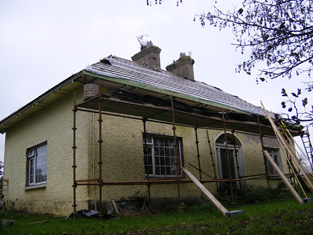
|
| Richmond Villa | This house valued at £16 in the mid 19th century was occupied by the Westropp family from at least 1814, although a Mrs Wallace was in residence in 1837. The Reverend Fitzgerald records a Mr William Wallace as resident in the 1820s and that the house was built about 70 years previously. It was situated on the Tomkins estate. | |
| Duane Ville | The residence of Alexander O'Grady Rose, held by him in fee at the time of Griffith's Valuation when it was valued at £7. It is no longer extant. | |
| Cooper Hill | The residence of James Cooper in 1814 and occupied by Mrs [Honora] Cooper in 1837. Inherited by James Cooper Tuthill circa 1844 who then assumed the surname Cooper. The house was valued at £45 at the time of Griffith's Valuation and in 1906 when it was occupied by James Cooper. It was advertised for sale in ''Country Life'' (28 April 1955), bought by Cement Ltd who ran a model dairy farm on the property for some years. A large dairy enterprise still operates on the property. The house is a ruin. |

|
| Faha | A property that was in the possession of the Tuthill family from the early 18th century, Wilson refers to it as Mr. Tuthill's seat in 1786. Occupied by Christopher Tuthill in 1814 and by his son George in 1837. Held by George Tuthill in fee at the time of Griffith's Valuation when the buildings were valued at £60. Thompson Russell lived at Faha in the second half of the 19th century. Valued at £52 in 1906 and occupied by George Taylor who held it with 308 acres of untenanted land. It is now a ruin. |
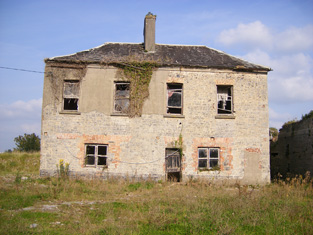
|
| Corcamore | A house situated on the Barker estate and occupied by Thomas Gleeson in the mid 19th century and valued at £18. [Grid reference is approximate]. | |
| Cragbeg | A house situated on the estate of Lord Clarina, occupied by Vokes in the 1770s and in 1786. It was leased to the Vandeleur family in the mid 19th century. Major Thomas Vandeleur was the occupier and the buildings were valued at £38. Occupied by Richard Parson in 1814, by G. Vandeleur in 1837 and by William Henry Harkness in the 1870s. Slater notes Lieut-Col. Lionel E. Massey as the owner in 1894. Still extant and occupied. |

|
| Elm Park | The records suggest that this house was built post 1814 and pre 1837 though there may have been an earlier property as Wilson refers to "Elm" as the seat of General Massey in 1786. Bence Jones writes that it was an early 19th century house. It was the home of the Massey family, Barons Clarina, in the 19th century. The buildings were valued at £90 at the time of Griffith's Valuation and in 1906. Bought by Patrick King in 1925 and home of the King family until 1956, now demolished. |

|
| Tervoe | Bence Jones writes that the house was built in 1776 by Colonel W.T. Monsell MP on the site of an earlier house. Wilson refers to it in 1786 as "the pleasant seat of W.T. Monsell". In 1894 Slater notes it as a residence of Lord Emly. A De La Poer grandson of the 1st Baron Emly succeeded to Tervoe in the 20th century and it was demolished in the 1950s. A detailed description of the interior of the house is given by the Irish Tourist Association surveyor in 1943. |

|
| Bettyville | Occupied by John Lee in 1814 and held by his son William Norris Lee in fee at the time of Griffith's Valuation and valued at £11+. Fitzgerald describes Bettyville in the 1820s as a 'handsome thatched cottage' occupied by Captain John Franklin. This house was the home of the Revrend John T.N. Lee and valued at £13 in 1906. | |
| Attyflin | A mid 18th century house, Wilson refers to Atthyflin as the seat of the Westropps in 1786. The house was occupied by Hamilton Jackson at the time of Griffith's Valuation and held from John Westropp. The buildings were valued at £50. In 1943 this house was owned by Mrs A. White, nee Massy Westropp and its contents at this time are described by the Irish Tourist Association surveyor. Home of a branch of the Hewson family in the 20th century. It is still extant. |

|
| Spring Lodge/Springfort | Dickson Esq was occupying a house at Ballybronoghe in the 1770s and in 1786. Spring Lodge was occupied by George Massey at the time of Griffith's Valuation and held from the Court of Chancery. George Massey was possibly the younger brother of the 3rd Lord Clarina. It is labelled Spring Lodge on the 1st edition Ordnance Survey map but as Springfort on the 25-inch edition of the 1890s. It is still extant and occupied. |

|
| Ballyclogh | The home of a branch of the Morony family during the 19th century. Occupied by James Todd in the early 1850s who held the property valued at £38 from the Moronys. An occupied house is still located at this site. |

|
| Ballyclogh Lodge | Ballyclogh House and Lodge are both marked on the first Ordnance Survey map of county Limerick. At the time of Griffith's Valuation John Russell held land in the townland with associated buildings valued at £12 from Michael Furnell. There were also mills in the townland valued at £35. Valued at £10+ in 1906 when occupied by George Furnell, Ballyclogh remained in the possession of the Furnell family until 1973. | |
| Derryknockane | George Gloster held this house in fee at the time of Griffith's Valuation when the buildings were valued at £20. | |
| Greenhills | Occupied by Thomas Sherlock in 1814 and by Peter Franklin who held the house valued at £10 and 177 acres from Jeremiah Tuthill, scond son of John Tuthill Villiers. A house is still extant at the site. | |
| Lemonfield House | Sometimes spelt Leamonfield, this house was the home of a junior branch of the Bevan family in the first half of the 19th century. Griffith's Valuation records Thomas Bevan as the occupier holding the property from the Reverend William Lloyd. It was valued at £14. ''Burke's Irish Family Records'' refers to Arthur Russell of Lemonfield, sixth son of John Norris Russell of Limerick. He died 1890. The house is no longer extant. | |
| Fort Elizabeth | Occupied by John Cripps in 1814 and the residence of the Reverend John Croker in 1837. William Croker was the occupier at the time of Griffith's Valuation when it was held from the representatives of James O'Sullivan and valued at almost £16. A substantial farm remains at the site. | |
| Monaster House | This house was the home of Michael Furnell in 1803. By 1814 the house on the Vandeleur estate, was leased to John Cantillon Heffernan . At the time of Griffith's Valuation, the buildings at Monaster were valued at £35 and leased by John Cantillon from the Vandeleur estate. In 1943 the Irish Tourist Association surveyor refers to a story concerning ghostly activities and that the house had been "pulled down" a short time previously. Much of the farmyard building complex survives. |

|
| Ballycummin | Roche Castle was a residence of Sir David Roche at the time of Griffith's Valuation held from the Bishop of Limerick and valued at £30. | |
| Cloghacloka | A house valued at £12, in the possession of the representatives of Pat D'Arcy and held from the representatives of Major Peacock, at the time of Griffith's Valuation. Some farm buildings are still extant at the site. | |
| Rockfield | Situated on the estate of Edward C. Villiers, this house was the home of a branch of the Blennerhassett family in the mid 19th century. It was named Rock View on the first Ordnance Survey map. The Ordnance Survey Field Name Book refers to Rockview as a "plain thatched cottage built in 1819". On the later 25-inch map the house is labelled "Rockfield House". Slater, in 1894, refers to it as the seat of R.B. Blennerhassett. In 1906 Rockfield was described as a mansion house and valued at £22. It was occupied by Richard A. Blennerhassett. A house is still extant at the site. | |
| Friarstown (New) | A 2 storey house with offices which was built in 1826 by Vere Hunt on the townland boundary between Friarstown and Friarstown North. It was the residence of Vere Hunt at the time of Griffith's Valuation, held in fee and valued at £20. No house appears to exist at this location now. |
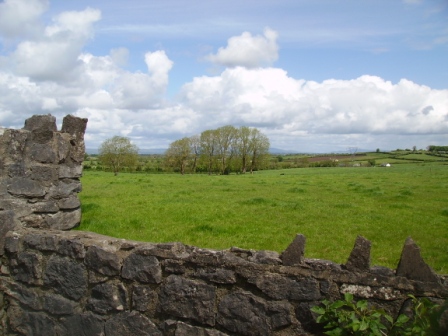
|
| Kilpeacon | Lewis writes that the manor was granted to William King in the reign of James I and that "the late proprietor" had erected a handsome mansion which was now the "property and residence of Cripps Villiers". In his will dated 1704 William King refers to his niece Mary Villiers. The Ordnance Survey Field Name Book states that Kilpeacon House was the property of Edward Villiers, Dublin, and was occupied by Miss Deborah Cripps. Built in 1820 it was a large, commodious building of 2 stories. It was the residence of Edward C. Villiers at the time of Griffith's Valuation, held in fee and valued at £60. Bought by Major George Gavin in the early 1850s from the Villiers and the residence of his son Montiford W. Gavin in the early 20th century. The Irish Tourist Association surveyor writes in 1942 that this house was completed in 1799. The owner was Mrs O'Kelly, her husband having purchased the house in 1927 from the Gavins. This house is still extant and occupied. |
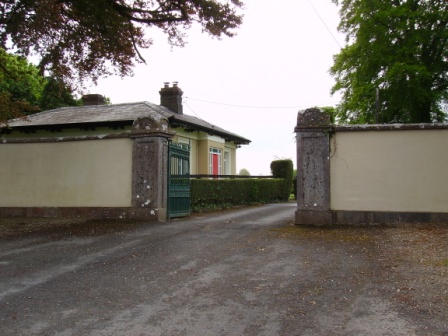
|
| Dooneen | The Reverend Fitzgerald writes that this house was "lately" built by Villiers Peacocke. The Ordnance Survey Name Books records 1820 as the date of its erection. Villiers Peacocke was still in residence in 1837 and Griffith's Valuation records him holding the property in fee. The buildings were valued at £18. It was included in the sale of the life estate of Eugene Kieran in the Land Judges' Court in April 1890 when the house was described as "a very good dwelling house.....suitable for a gentleman's residence". The sale was adjourned. A house is still extant at the site. | |
| Roxborough | Occupied by William Westropp in 1814 and Lewis refers in 1837 to the ''fine mansion and demesne'' of the Honourable J. P. Vereker. The Ordnance Survey Name Book refers to the rebuilding of Roxborough by Major Vereker in 1832 at the expense of approximately £1200. Viscount Gort held Roxborough in fee at the time of Griffith's Valuation when it was valued at £40. The house was advertised for sale in June 1852 and again in June 1853. Possibly bought by the McMurrays who were certainly resident by 1862. In 1894 Slater refers to it as the seat of A. Crawford. Now a more modern house appears to be located at this site. |
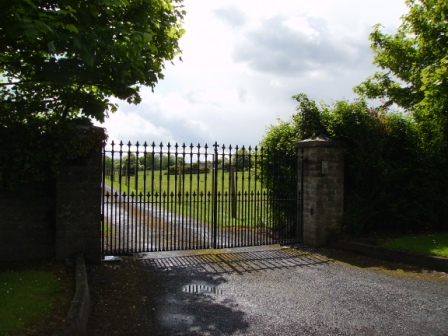
|
| Finniterstown | Mr Edmund Hogan was resident at Finniterstown in 1814. The Ordnance Survey Field Name book records the building of a 2 storey house at Finneterstown in 1833 and that it was occupied by William Fosberry circas 1840. Located on the St Leger estate this house was occupied by Frederick Maunsell in the early 1850s and was valued at £11. | |
| Ballynakill | A house on the Pigott estate, burnt by the insurgents on 24 February 1822 according to Fitzgerald as it had been converted into a soldiers' barrack. It was occupied by Richard Pierce Power in the early 1850s and valued at £14. |

|
| Adare Manor | Early 18th century house replaced by a Tudor-Revivalist style building in the mid 19th century, the home of the Quin family and Earls of Dunraven. In 1786 Wilson describes the original house as "a very noble structure with fine and extensive demesnes". At the time of Griffith's Valuation valued at £130 and in 1906 the buildings at Adare Manor were valued at £182. Now functions as a hotel. |
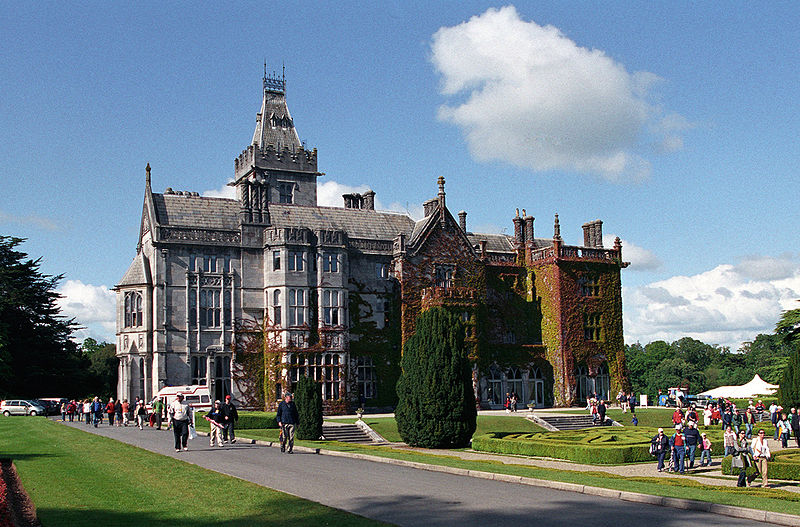
|
| Kilgobbin | Occupied by George Fosberry in the early 1850s held from the Earl of Dunraven and valued at £30. An inventory of the furniture at Kilgobbin was compiled in June 1923 for A.P.Pollock. It is still extant. | |
| Mondellihy | Occupied by George Fosberry at the time of Griffith's Valuation, held from the Earl of Dunraven and valued at £15. By the end of the 19th century this house was the home of Peter David Fitzgerald (1855-1935), a younger son of George Fitzgerald 1st Baron Fitzgerald of Valencia and grandson of the Knight of Kerry. |

|
| Rineroe [Fort Union] | The house at this site is labelled Rineroe on the 1st edition Ordnance Survey maps but as Fort Union on the later 25-inch map of the 1890s. It was held by John Christy from the Dunraven estate at the time of Griffith's Valuation and valued at £24. It is still extant and occupied. |
![Photo of Rineroe [Fort Union]](https://landedestates.ie/storage/img/orig/2850.jpg)
|
| Castleroberts | Occupied by Michael Cantlow [Cantillon] in 1814 and by John Heffernan Cantillon at the time of Griffith's Valuation and held from Edward B. Hartopp. The buildings were valued at £13+. A farmyard is visible at the site now. | |
| Carass House | Caherass/Carass House was the seat of the Roche family from the early 19th century. The family had a large flour mill in the townland of Caherass and the house was situated closeby but in the next townland. At the time of Griffith's Valuation Sir David Roche held the house and 235 acres in Ballouragan from Messrs Barrington and Delmege. In 1894 it was the seat of Sir David V. Roche. In 1943 the Irish Tourist Association surveyor wrote that the house was accidentally destroyed by fire "many years ago". | |
| Carass Court | ''Burke's Irish Family Records'' states that Jeffrey Browning purchased Carass Court, from Lord Carbery. Leet records Jeffrey Browning as the proprietor of Carass Park in 1814. Jeffrey/Geoffrey Browning was married to Frances, sister of Sir David Roche, 1st Baronet. By the time of Griffith's Valuation Thomas Wise Browning was the occupier and he held the property, valued at £50, from Sir David Roche. The Brownings were still resident at Carass Court in the 1940s but the house was later demolished. |
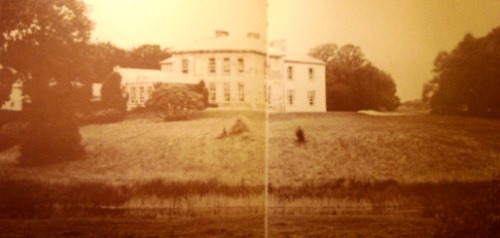
|
| Croom House | Croom House was the home of the Lyons family in the 18th and 19th centuries. The house of James D. Lyons was valued at £48 in the early 1850s and he had a flour mill valued at £75 closeby. He held the property from John Croker. Described in 1943 by the Irish Tourist Association surveyor as a beautiful mansion on the left bank of the Maigue river, it was then in use as a military post. The house is still extant and occupied. |

|
| Islandmore | Tooreen, located just south of the town of Croom, was the residence of James D. Lyons in 1814 and 1837. By the early 1850s this house, then known as Islandmore, was occupied by Robert Maxwell, valued at £60 and held from Miss Catherine Giles. It later became the home of the Kelly family and Slater refers to it as the seat of John Roche-Kelly in 1894. Colonel Basil Roche Kelly was resident at the time of the Irish Tourist Association survey of 1943. The surveyor wrote that the house was originally Georgian but had suffered many alterations. |
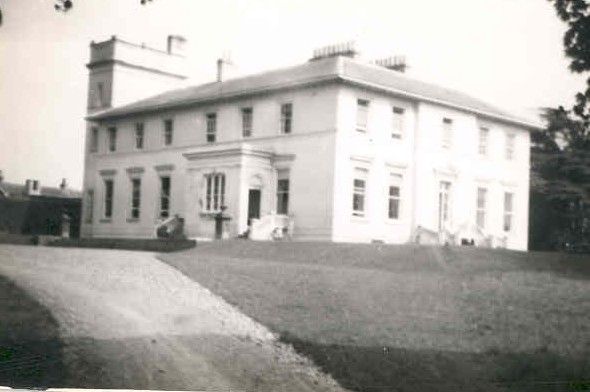
|
| Croom Castle | Originally a Fitzgerald Castle, subsequently granted to the Duke of Richmond who sold it to John Croker in 1721. Reverend Fitzgerald writes that Croker was agent to the Duke. A residence was built with some of the stone from the old castle. Situated on the outskirts of the town of Croom this house was occupied by Samuel A. Dickson in the mid 19th century who held it from the Crokers. The buildings were valued at £30. Sold in the late 1880s to the Lyons family and bought by Michael Corry in 1936. Now functions as self catering accommodation. see http://www.croomcastle.com/history.html |

|
| Abbeyville | A house located on the Finch estate and the home of the White family in the 19th century. Occupied by William White in 1814 and Richard White in 1837 and at the time of Griffith's Valuation when the buildings were valued at £26. Later the home of Henry Ievers, a younger brother of Robert Holmes Ievers, of Castle Ievers. The original house is not extant but a house still exists at the site. |
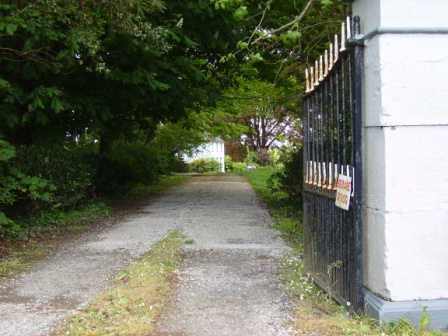
|
| Dunnaman | Matthew O'Flaherty held buildings valued at £13+ and 219 acres from James D. Lyons at the time of Griffith's Valuation. Grid Reference is approximate. | |
| Carrigeen | John Christy held a house valued at £21 and 513 acres at Carrigeen from the Earl of Dunraven at the time of Griffith's Valuation. A modern farm is extant at the site now. | |
| Ballinacurra House | Marked on the first Ordnance Survey map and situated on the outskirts of Limerick city this house was occupied by Edmund Palmer at the time of Griffith's Valuation when it was valued at £23 and held from Patrick O'Shea. Later the home of Hugh Massy. He died at Ballinacurra in 1881. Now in use as an office. |
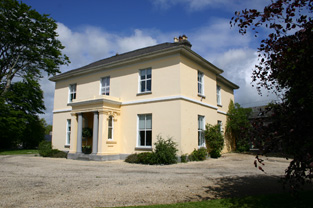
|
| Fanningstown Castle | An 18th century house which was the home of the Jackson family. Henry Lee is recorded as resident at Fannings-town in 1814. This house was demolished and a battlemented building was erected in the bawn of the old medieval castle by Hamilton L. Jackson in the 1850s and offered for sale in 1860. Bought by David Vandeleur Roche of nearby Carass in the 1860s. Occupied by James Fitzgerald Bannatyne in 1906 who held the mansion house valued at £31+ and 359 acres of untenated land. The castle now provides self catering accommodation and can be hired as a venue for functions such as weddings. http://www.fanningstowncastle.com/index.htm |

|
| Dromore Castle | In 1868 the building of Dromore Castle began. It was an elaborate country retreat for the 3rd Earl of Limerick designed by Edward William Godwin. In 1906 this mansion house was valued at £75.10 shillings. The 4th Earl of Limerick did not visit Ireland very much and the castle was sold in 1939. In 1944 the Irish Tourist Association surveyor refers to the castle as the property of Mr M.McMahon, a timber merchant of Limerick, who bought the property in 1941 for a reputed £8,000. By the mid 20th century it had fallen into disrepair and the roof was taken off. Plans to develop the site and to demolish the ruin are current issues discusssed in the local and national press. |
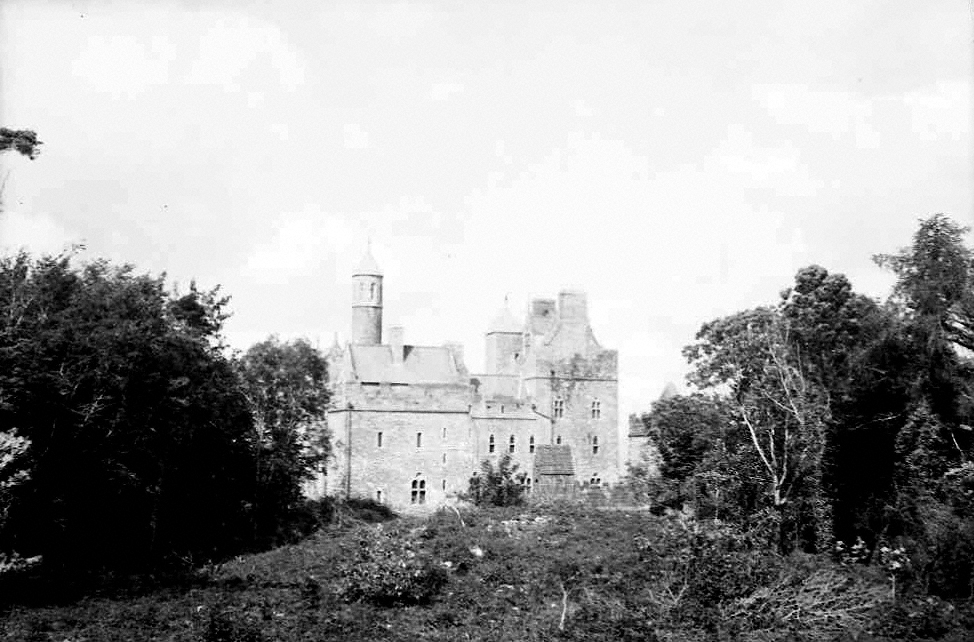
|
| Smithfield | Originally a Aylmer residence, later leased by the Smith family. The house was occupied by Richard Smith in 1814 and by R. Smith in 1837, later in the possession of the Fergusons. A 3 storey hand drawn house is depicted on the sale rental map of the Aylmer estate. Smithfield House is now the centre of a working farm run by the Lowe family and offers Bed and Breakfast accommodation. |

|
| Friarstown | The National Inventory of Architectural Heritage states that he house was built in 1827 for David Urqhart Hunt and cost £10,000. At the time of Griffith's Valuation the house was occupied by Henry Hunt who held it from the Reverend Richard Maunsell, valued at £35. This property is now known as Friarstown Stud. |

|
| Rosbrien | A home of a branch of the Quin family descended from John Quin, second son of Thady Quin (1645-1726). Wilson, writing in 1786, refers to Rosbrien as the fine seat of Mr. Quin. It is labelled Rossbrien House on both the 1st and 25-inch edition Ordnance Survey maps but is no longer extant. |

